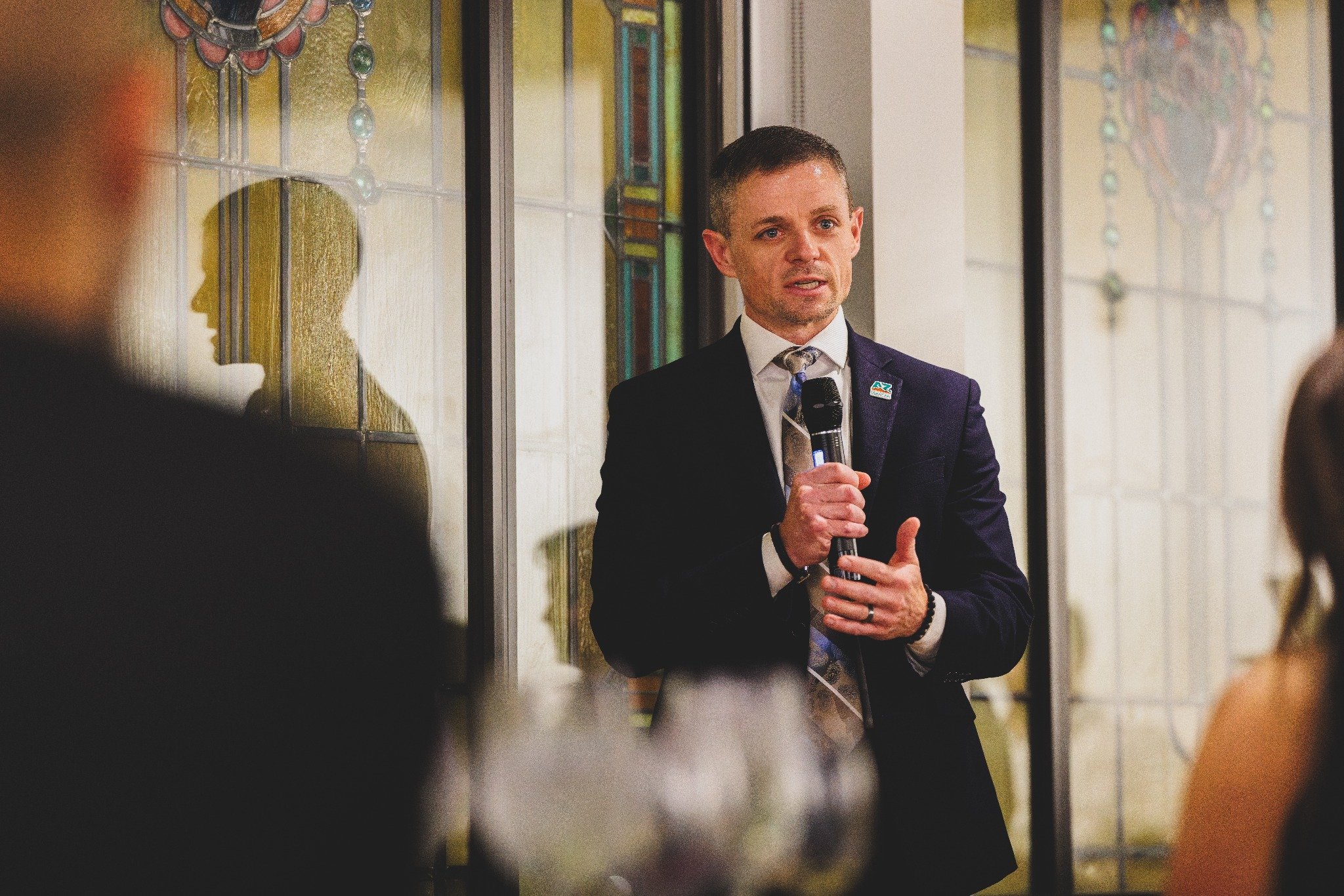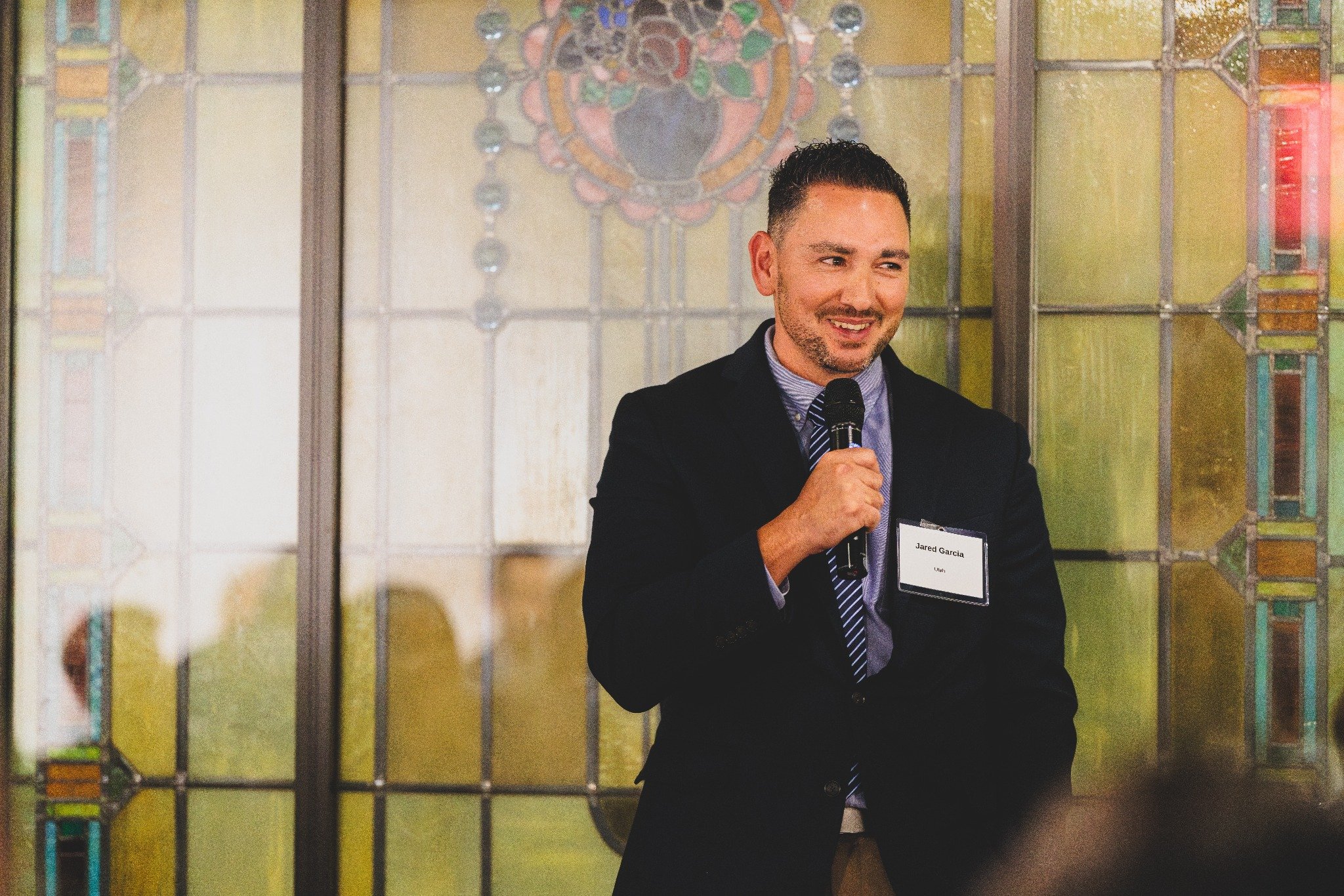Beyond the Buzz: Reflections from Convening Leaders on Transforming Corrections with AI

On the eve of our annual Partner Summit, we gathered corrections and philanthropic leaders at the Museum of Contemporary Art in Arlington. The event, "Transforming Corrections with AI," wasn't another tech conference promising silver bullets. The stakes in corrections are too high for hype.
Instead, we brought corrections directors from over a dozen states into a candid, high-altitude conversation with leaders from the nation's foremost philanthropic organizations—Arnold Ventures, Ballmer Group, Citadel, Gates Foundation, The Just Trust, Patrick J. McGovern Foundation, Stand Together, —and policy leaders from tech, including OpenAI.

The goal: to move past the buzzwords and ask what this new technology actually means for one of the most complex, high-stakes, and human-centric fields in the public sector.
Key themes emerged from our speakers and the discussions that followed–a strategic exploration of what's finally possible.
1. We've Hit the Limit of Traditional Data
A clear theme, articulated powerfully by Michigan Director Heidi Washington, was that many leaders have already tackled the "low-hanging fruit." They’ve used traditional, structured data to make incredible progress: they have systems in place to track when someone checks in with their parole officer, gets in trouble, gets a job, gets released. They’ve segmented returns to prison and chipped away at revocation rates and probation violations. But to get to the next level of impact, they need new tools.
The "unknowable" challenges—like understanding why someone is struggling with stable housing or which jobs lead to long-term careers versus temporary gigs—are locked away in unstructured data: the one million case notes Michigan staff write each year, the intake interviews, the casual conversations.
AI is, for the first time, making this "unknowable" data knowable. It's allowing leaders to move from asking "Is this person employed?" to "Is this person on a path to stability?"
2. The Vision: From "Paperwork to Peoplework"
A persistent reality for every leader in the room is the grinding pressure of staffing shortages. Director Ryan Thornell spoke about how Arizona is Reimagining Corrections and driving culture change against the background of this fundamental constraint. You can't, as he noted, expect staff to reimagine their roles when you give them 30-year-old software.
He shared a starkly relatable example: parole officers taking notes by hand, only to scan those notes as a PDF into an offender management system. As he put it, "None of these PDFs are helping people get a job."

The shared vision for AI isn't about replacing staff; it's about augmenting them. It's about automating the compliance and paperwork that burns people out, freeing them to do the irreplaceable, human-centric "peoplework" that changes lives. And critically, as Director Thornell emphasized, these tools are built to keep the human-in-the-loop—the case manager always makes the final call. Arizona is an early pilot state for Recidiviz's AI-powered Case Planning Assistant, demonstrating this vision in action.
3. AI as the "Digital Connective Tissue"
For decades, leaders have been trying to solve the “revolving door”—the cycle of individuals moving between jails, streets, emergency rooms, and state corrections. In Utah, Director Jared Garcia and State Representative Tyler Clancy shared how they are tackling this head-on.
They noted that while everyone shares a vision of cross-agency collaboration, it has been operationally impossible to achieve with binders and spreadsheets.
A further transformative potential of this technology lies in its ability to be the digital connective tissue our government has been missing. AI can, for the first time, stitch together siloed systems—police, courts, corrections, and community providers—so everyone is working from the same playbook, in real-time. This is how we move beyond managing chronic cycles to actually breaking them.

4. Grounded in Long-Term Partnership
The evening's conversations were brought to a close by Director Colby Braun of North Dakota, Recidiviz's first-ever partner state. Director Braun's remarks underscored a theme beyond the technology itself: the power of trusted, long-term partnership.
He spoke to the evolution of our work together—from an ambitious idea to a robust platform—and emphasized his appreciation for the personal support and collaborative spirit of the Recidiviz team. It was a powerful reminder that these ambitious technological leaps are only possible when built on a foundation of deep, human-to-human trust and a shared mission.
5. A New Coalition for Change

Perhaps the most significant takeaway was the spirit of the room itself. The presence of major philanthropists signals a powerful shift. These leaders see that corrections is not an isolated system but is central to solving America's biggest challenges, from public safety to economic mobility and community health. They see that corrections leaders and their staff have the potential to create a more prosperous, equitable and safe America. They just need some help to get there.
The consensus was clear: while we must be thoughtful and deliberate about managing the risks of AI, "lives and liberty are at stake if we continue with the status quo."
We left not with a sense of finality, but of commencement. The conversation has moved from "Can AI work in corrections?" to "How will we, as a coalition of leaders, responsibly and ambitiously guide it to solve our most entrenched problems?"
That is the work that lies ahead, and we are more energized than ever to be on the same team, pushing for those answers together.

